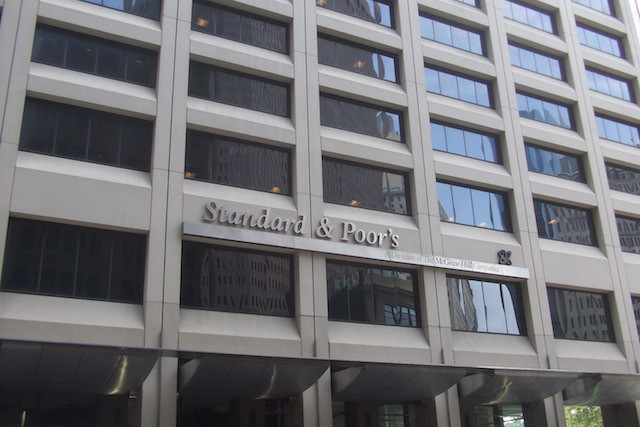Standard & Poor’s confirmed that the grand duchy still had its “AAA” rating with a “stable” outlook in a periodic review issued on Friday.
In a statement published on 15 September (registration required), S&P said:
“The stable outlook reflects our expectation that, over the next two years, Luxembourg will maintain strong credit metrics while effectively managing change in international fiscal and financial regulations.”
The agency also wrote:
“Our ratings on Luxembourg reflect its prosperous economy, transparent and effective institutional framework, prudent budgetary policies, and recurrent external surpluses. The financial and business services sectors are Luxembourg’s key industries, supporting its role as a financial hub and contributing to its prosperity. At the same time, however, they expose Luxembourg to changing international financial regulations and potential external shocks. Our forecast represents our base case and does not explicitly take into account potential upsides from the U.K.’s referendum vote to leave the EU or downsides related to tighter regulation. Those potential shocks are somewhat mitigated by the diversity of activities within the sector and by government’s efficient policy responses, which are consistent with a ‘AAA’ rating.”
In addition, the outfit said that Brexit had a further potential downside and potential upside:
“Were Brexit to have a significant negative impact on the eurozone economy as a whole, Luxembourg’s economy could also slow down. It is also unclear, at this stage, how Brexit might affect the EU’s internal politics, including the general attitude toward financial sector regulation; uncertainties related to Brexit and U.S. policy could prompt a retreat of cross-border integration. Nonetheless, in the short term, Brexit also represents upside risk in view of decisions by financial institutions moving their operations totally or partially from the U.K. to Luxembourg.”
“Luxembourg is coping with the new international tax environment,” such as international initiatives to clamp down on multinational corporate tax avoidance--including the EU’s Anti-Tax Avoidance Directive--and European Commission investigations into several years of Luxembourg’s tax rulings, S&P said.
Another possible risk to the country’s public finances is the retirement system, the credit agency stated:
“We regard Luxembourg’s 2013 pension reform as a step in the right direction. However, we find that the current framework is not sufficient to contain the long-term budgetary pressure. Early retirement schemes are still widespread and the projected effective retirement age is below the EU average”.
Pierre Gramegna, the finance minister, said in a government press release on Friday:
“Just a few weeks before the finalisation of the 2018 budget, this new AAA confirmation highlights the trustworthiness and soundness of the government’s decisions on managing public finances. The AAA rating is a sign of confidence in the Luxembourg economy, as it underlines the attractiveness of the country for investors and consequently encourages the creation of new jobs.”
AAA is the highest of 15 credit scores issued by Standard & Poor’s. Generally speaking, a higher credit rating reduces a government’s cost of borrowing on the capital markets.
The other EU members with AAA scores from S&P are Denmark, Germany, the Netherlands and Sweden. Lichtenstein, Norway and Switzerland also have the top-notch ratings, as do Australia, Canada, Hong Kong and Singapore.
